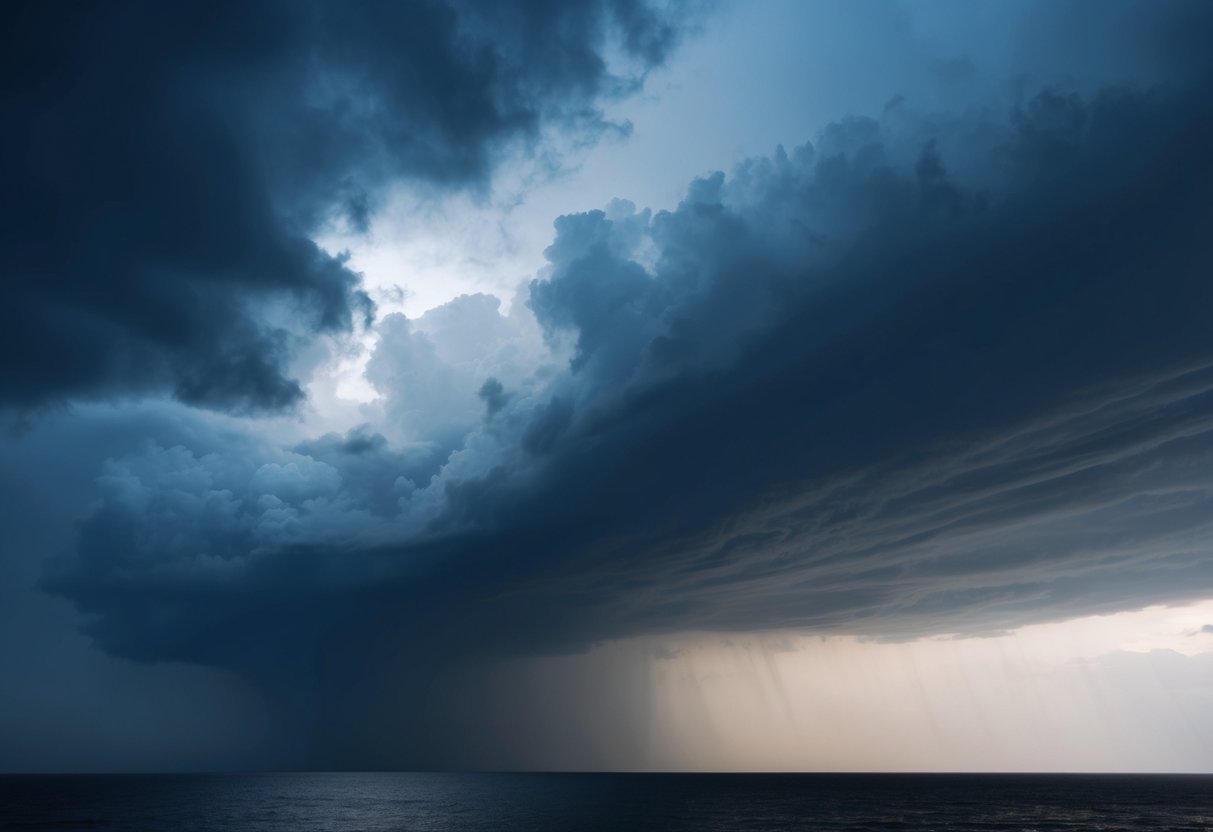
The Badai (BADAI) airdrop has caught the attention of many in the crypto world, especially among Floki (FLOKI) holders. Eligible FLOKI and TOKEN holders have already received their allocation of BADAI tokens as part of this highly anticipated airdrop. This direct distribution means that if their wallets qualified, users can now check for their new tokens.

Badai launched its tokens in February 2025, promising to expand its reach within the community. The airdrop aimed to reward loyal supporters and generate more excitement for the BADAI project. For those interested in crypto rewards and new token projects, the details of this airdrop are worth knowing.
With the distribution already completed, many are keen to see how BADAI develops and its impact on the wider crypto market. This post will break down everything users need to know about the Badai airdrop and what comes next for holders.
Today’s Airdrop Checker Even: Step-by-Step Claim:
🌐 Step 1: Visit the Official Airdrop Reward Page.
Dive into the action by heading to the official airdrop page, where all live events are waiting for you. Log into your account by connecting your wallet from any MOBILE DEVICE.
📱 Step 2: Use Your Mobile Wallet
Eligibility checks are mobile-exclusive! Grab your smartphone and ensure you’re using a mobile wallet to participate.
💎 Step 3: Meet The Eligibility Criteria
Make sure your wallet isn’t empty or brand new—only active wallets qualify. If one doesn’t work, don’t worry! Try again with another wallet to secure your rewards. You can claim many rewards from multiple wallets, so try to use multiple wallets to increase your chance to claim.
💰 Step 4: Withdraw The Tokens
After signing the approval from your wallet, wait 5 to 10 minutes, and then congratulations! You will see a token claim in your wallet. You can easily exchange your tokens from SushiSwap, PancakeSwap, and many more.
Understanding Badai Airdrop

Badai Airdrop is an event connected to the cryptocurrency community, especially for those holding FLOKI tokens. It gives holders the chance to receive BADAI tokens directly based on the amount of FLOKI they own.
What Is Badai Airdrop?
The Badai Airdrop is a distribution of BADAI tokens to people who already hold FLOKI tokens in their wallets or on supported exchanges. The token amount each person receives depends on the quantity of FLOKI held. This means, for example, someone holding 1,000 FLOKI will get more BADAI than someone holding 10 FLOKI.
There is a minimum requirement: holders must own at least 1 FLOKI to qualify. The process is automatic for eligible users, and there is no need to fill out forms or take extra steps once tokens are counted. The airdrop uses the blockchain to track and deliver BADAI tokens quickly and transparently. 35% of the total BADAI supply is set aside for this distribution, which makes it a large-scale event for the involved community.
Purpose and Benefits
The main goal of the Badai Airdrop is to reward and increase engagement among FLOKI holders. By offering BADAI tokens, the team behind the project hopes to build more interest and support for both the BADAI and FLOKI tokens. This also helps introduce the BADAI token to a wide group of people very quickly.
The airdrop promotes a sense of community and loyalty because only FLOKI holders are eligible. In addition, by spreading out a large part of the BADAI supply, the project aims to increase the token’s use in the ecosystem. Participants can benefit through potential value increases or by using the new token as planned by the project team. This distribution method often leads to more active users and a stronger network.
How Badai Airdrop Works

The Badai Airdrop gives out BADAI tokens, focusing on rewarding certain FLOKI holders. The main factors include who can get the tokens and how the tokens are divided and sent.
Eligibility Criteria
To be eligible for the Badai Airdrop, users must hold at least 1 FLOKI token. Higher FLOKI holdings mean a greater share in the airdrop. Holdings can be on supported centralized exchanges (CEXs), decentralized wallets, or through specific platforms like the Floki Trading Bot.
There are no staking requirements or NFT ownership needed to qualify. The process only checks FLOKI balances, and the snapshot used for eligibility is taken on a set date announced by Badai and its partners.
Smart contracts on the Binance Smart Chain verify and record these balances. Matching and blockchain audits ensure users do not double-claim their rewards across wallets or exchanges. Users do not need to interact directly with any smart contract to qualify.
Distribution Process
Badai Airdrop allocates 27% of BADAI’s total supply to FLOKI holders based on their balance at the snapshot. Another 4% is reserved for those who use the Floki Trading Bot. The remaining part of the supply goes to other purposes, not related to the airdrop.
Once the project team finishes the snapshot review, they use automated smart contracts to send out BADAI tokens. Each eligible wallet receives the right amount, with no extra steps required from users.
Tokens appear directly in supported wallets or exchange accounts. The entire process happens on the Binance Smart Chain, ensuring fast and transparent delivery. There is no direct staking, NFT requirement, or use of zero-knowledge (zk) proofs in the airdrop method. All matching and distributions are handled in the background by the system.
Tokenomics and Trading Insights

Badai’s airdrop brings several important details about the BAD Coin’s supply, liquidity, and blockchain support. Understanding these elements helps users gauge potential value, trading activity, and usability.
BAD Coin Supply and Allocation
The total supply of BAD Coin (BADAI) is set at 1,000,000,000 tokens. Allocation details include:
- TokenFi Launchpad Round: 10% (100,000,000 BADAI)
- $CAT Ecosystem Airdrop: 2% (20,000,000 BADAI)
- FlokiDAO Round: 2% (20,000,000 BADAI)
Most tokens remain locked or allocated for future use. Presently, only a small portion is in active circulation following the airdrop events. The rest are vested to ensure gradual release and to prevent sudden market shocks. The allocations support ecosystem development, early supporters, and community growth.
Liquidity and Trading Volume
BAD Coin’s liquidity depends on listings and active pairs, typically against stablecoins like USDT and sometimes GBP. Early trading volumes are modest, reflecting new listings and cautious trading behavior. Most trading activity occurs on decentralized exchanges that support the BADAI token.
Liquidity pools have been established to facilitate easier swaps and stabilize prices. Trading volume could increase as more holders from the airdrop begin moving their tokens. Data shows that initial market activity often fluctuates as users decide whether to hold or sell after receiving their airdrop allocations.
Supported Blockchains
BADAI primarily operates on the Ethereum blockchain, which allows for wide compatibility with wallets and decentralized exchanges. Some sources indicate future plans for multichain support, such as integration with the Sui blockchain, but the main focus remains on Ethereum for now.
Using Ethereum provides access to established infrastructure, including popular wallets like MetaMask and network support for ERC-20 tokens. Potential expansions to other blockchains may improve speed, reduce fees, and attract new users, depending on how the project progresses.
Opportunities and Risks
The Badai Airdrop offers new ways for holders to earn tokens and grow their portfolios. However, it also comes with several issues that need careful consideration, including technical delays and security challenges.
Potential Rewards
The Badai Airdrop will distribute 35% of its total token supply to holders of FLOKI and TokenFi, rewarding those who keep tokens on-chain or use supported exchanges. For FLOKI holders, this means up to 27% of the total Badai token supply goes directly to them. TokenFi holders can claim around 4%.
Rank in the distribution depends on how many eligible tokens a user holds. Larger balances usually lead to a larger share of the airdrop. Receiving free tokens can help users grow their assets with little effort or cost.
Some investors see airdrops like Badai as a way to access new tokens without buying them outright. High participation in early airdrops has sometimes led to strong price performance in new tokens, but results can vary.
Performance Bottlenecks
Blockchain airdrops like the Badai event sometimes face performance bottlenecks. Heavy demand can slow down wallet interfaces and network speeds, especially as eligible users try to claim their rewards at the same time.
Badai’s distribution relies on both on-chain data and exchange support, so delays could happen if either system gets backed up. Extended transaction confirmations are possible when too many users interact with the network all at once.
Technical problems such as slow website load times, lost connection, or lag in the airdrop claim process can frustrate users. These obstacles might also lead to missed claims if deadlines are tight.
Security Considerations
Security risks are important to address during any airdrop. Some scammers build fake landing pages or send phishing messages that ask users to enter their wallet information or private keys to “claim” airdrops.
Badai participants should only interact with official links and never share sensitive data. Any request for private keys is a scam. They must also verify contract addresses before making transactions.
Storing tokens in secure wallets and turning on two-factor authentication for exchanges helps reduce theft risk. Using trusted platforms like Binance and checking for updates from Badai’s team will help users avoid common threats.
Frequently Asked Questions
People interested in the Badai Airdrop often have questions about how to join, what is required, key dates, and choosing the right steps. They also want to know about possible risks and if it is suitable for newcomers.
How can I participate in the Badai Airdrop event?
To take part in the Badai Airdrop, users need to follow the official instructions from the Badai team. Usually, this means holding supported tokens, such as $CAT, or using certain platforms that are included in the event.
What are the eligibility criteria for receiving the Badai Airdrop?
Eligibility often requires users to hold specific tokens on-chain at the time of the official snapshot. For example, holding $CAT tokens or being a user of services like Floki may be necessary. Sometimes, identity verification on certain exchanges like Gate.io is also required.
What steps do I need to follow to ensure I receive my Badai Airdrop tokens?
Participants should first prepare a Badai-compatible wallet. Next, they must make sure they have the required tokens in their wallet before the snapshot date and time. Some airdrops also require account creation on specific platforms and completing identity checks.
When is the deadline to register for the Badai Airdrop?
The snapshot for eligibility can be a strict deadline. For at least one event, the snapshot was set for January 18, 2025, at 6:00 PM UTC. Airdrop claim windows and registration times can vary, so participants should check the official details for each phase.
Are there any risks associated with participating in the Badai Airdrop?
Risks may include scams, phishing attempts, or loss of privacy due to sharing personal details. Users should follow only trusted sources and never share their private keys. Always use secure wallets and double-check announcements with official channels.
Can I join the Badai Airdrop if I’m new to cryptocurrency?
Yes, newcomers can usually join if they set up a compatible wallet and meet the requirements. Following clear guides and double-checking details can help new users avoid mistakes during the process. No advanced technical skills are needed, but basic knowledge of wallets and token transfers is helpful.
Leave a Reply